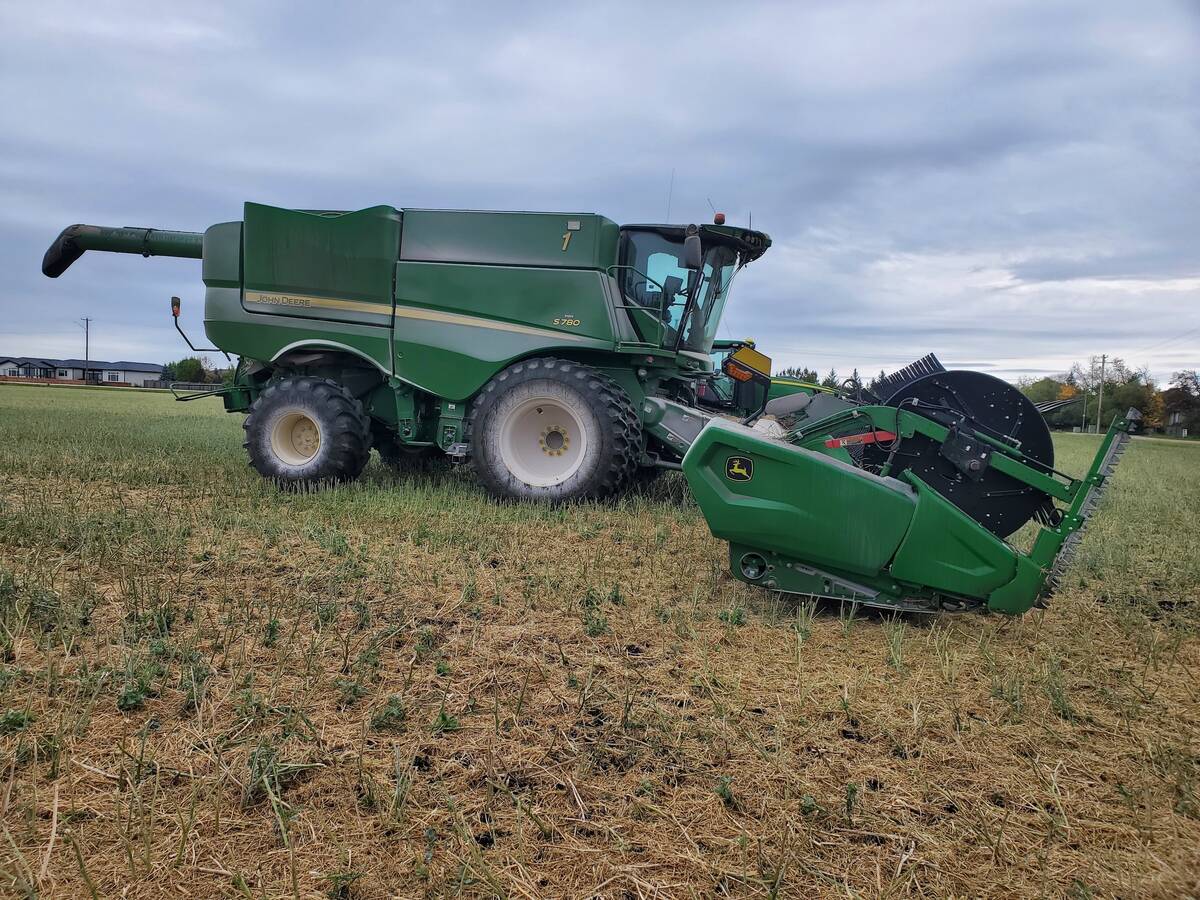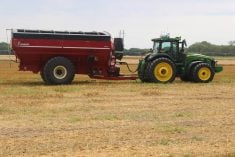Bullish or bearish?
It’s hard to say.
That holds true for virtually every market, for every commodity, for every economy in world markets as traders return to their desks after a restful August, power-on their computers and grapple with the conditions that will define world markets from now till next holiday season.
“You can paint a pretty bullish or bearish picture on how the next 12 months will play out,” acknowledged Mike Jubinville of MarketsFarm in an interview.
“The breadth of volatility is enormous.” Much like the school year and the crop year, the trading and markets year runs from early fall until summer, with volatile movements in summer often stoked by low-volume trading of the few people paying attention to the markets.
Read Also

Powdery mildew can be combine fire risk
Dust from powdery mildew can cause fires in combines.
In early September, legions of traders, analysts, bankers, brokers, traders, buyers, sellers, shippers and consumers return to their offices and take a serious look at the state of the world markets. Often that leads to dramatic market moves, generally to the downside. Autumn can be the Ragnarok for bull markets.
However, this summer was one of down markets, whether for stocks, commodities or real estate. That sets up an unusual autumn, in which the usual “holy crap” behaviour of markets could possibly have been pre-empted.
What confronts summer-bleary traders as they return to their desks?
- World recession: Are we going into a global economic slump? There are lots of signs we are, with Europe about to endure a gas-based, winter boot-to-the-nuts from Russia, China persevering in its “zero COVID” farce, the formerly developing world slumping as commodities weaken, and the Winnipeg Blue Bombers continuing to be successful. In some ways it seems apocalyptic.
In other ways the bull might seem to be about to be released, along with the Kraken.
- United States job numbers were great Sept. 2, suggesting their flagging economy might not be as weak as thought.
- The Russia-Ukraine war appears to have bogged down into a war of attrition, which is awful for Ukraine, but suggests that the war might stop being a significant player in the world markets.
- World weather is still crap, except in Western Canada.
- Markets have already factored in a negative outlook for the coming months.
There are cottage industries feeding all these areas of discussion.
I’m interested in Prairie-specific ag situations.
For livestock producers in Western Canada, it’s nothing but good that dryness in the U.S. Midwest means feedgrain crops are suffering and they’ll be able to pick up the spread between U.S. feedgrain prices and Canadian prices, plus higher farrowings and better herd-building in Western Canada.
There should be less meat supply in the U.S. and more in Canada, so returns should be good for Canadian livestock producers.
Great crops in Western Canada (barring frost) and smaller crops elsewhere mean cash should be flowing back into farmers’ coffers.
The Silmarillion has been approximated by Prime Video and there are many other delightful streaming offerings coming our way.
Whatever I say here means nothing. Hordes of traders and analysts have returned to their offices. Animal spirits will prevail. The mob will move one way or the other.
Be prepared.
To quote Dan Rather: “Courage.”


















